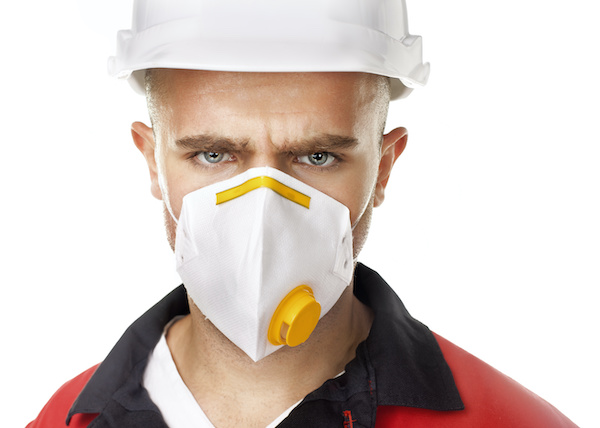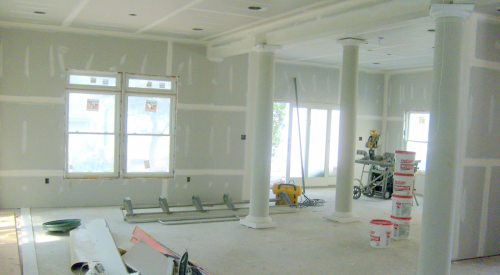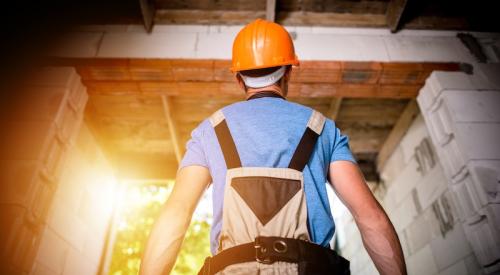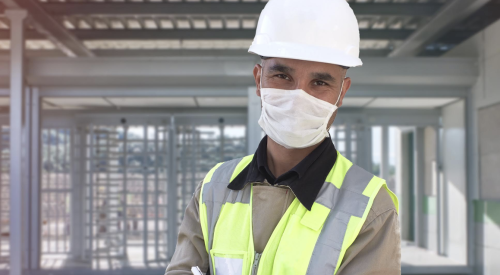In states and municipalities where home building is still deemed an essential industry despite mandated coronavirus restrictions, the daily routine for builders can almost seem like business as usual. Then there’s Michigan, where Gov. Gretchen Whitmer issued a stay-at-home order Monday night effectively shutting down many businesses, including residential construction.
Mike Schaap, founder and president of Mike Schaap Builders, in Holland, Mich., had to close about a dozen jobsites and his millwork operation earlier this week. Some of his employees are able to work from home, but he says dozens of superintendents, carpenters, and other on-site personnel were laid off.
Builder Efforts to Help Employees Through the Crisis
Schaap is making plans to assist his furloughed workers by putting his money into a critical needs fund to help them get through the crisis. But one of the many unprecedented scenarios that individuals, businesses, and society are facing from the COVID-19 pandemic is how business owners can help without penalizing the recipients of such assistance. “We want to come up with ways to help them beyond [unemployment compensation] because that assistance is limited,” Schapp says. “Unfortunately, if you help them beyond that, they lose dollar for dollar what they receive in unemployment.”
Since guidelines and regulations on financial assistance are changing by the day, Schaap is looking for any information from authorities that will enable him to help his crews with this special need. For him, the fund is about getting his furloughed workers through uncertainty and also reversing an industrywide problem.
RELATED
- More coronavirus coverage and helpful tips for home builders and housing professionals
- Periodically updated results from Pro Builder's COVID-19 Business Impact Survey
“In the last downturn, there were a lot of people who left the crafts, and we don’t want to lose any more of our skilled labor workforce through this thing, however many weeks,” he says. “We want them to sustain themselves, so they don’t say ‘screw this’ because they get furloughed every time there’s a downturn. We want to make sure we come out on the other side of this with a strong workforce. That’s been an ongoing battle.”
As of press time Friday morning (March 27), Congress was to vote on a $2 trillion Coronavirus stimulus package that included a $350 billion paycheck preservation component. These small-business loans would turn into a grant for owners who keep employees on the payroll. The proposal also offers companies with less than 500 workers a 50% refundable payroll tax credit for retaining employees.
Home Builders Still Working During the Pandemic But Taking Steps to Ensure Safety
Schaap belongs to the Premier Builder 20 Group, a collection of 17 custom home builders from noncompeting markets that share best practices and other business management wisdom as part of a networking program administered by the National Association of Home Builders. His company is the only one operating in a state in which authorities did not deem home building an essential activity.
“I think we could keep our jobsites open and do it safely, certainly as safe as some of the businesses allowed to stay open,” Schaap says. “There are ways to work in a good-size home and keep people safe. Is it perfect? No, but neither is going to the gas station.”
Recently, and in light of the virus, company owners in the Premier Builder 20 Group, through Skype and group emails, established policies to ensure the health and safety for employees and for subcontractors working on a jobsite.
For instance, every builder in the group agreed to close their offices to visitors until further notice and is limiting personnel, such as the bookkeeper, to work in the office every other day. And, when group member Jonathan Schoenheider, owner of Regency Builders, a custom home builder in Pewaukee, Wis., needs a face-to-face meeting with more than one employee, he simply staggers schedules so no more than two people are in the building at the same time.
Regency, as with other companies in the group, also are making good use of Skype, Zoom, and GoToMeeting apps for teleconferences with architects, clients, project managers, and subcontractors.
“All of us are designing with a lot of people, and a couple of us had clients put their projects on a two-month hold,” Schoenheider says.
But no one in the group has had a client say they’re not going forward, he reports. “Out of the 150 projects (in the group) not one of us have had an architect or client back away right now.”
Regency is asking subcontractors to group themselves into teams as small as three to five working together full-time. Should one team member get infected, the other members of that team must stay home for 14 days while another tea fills in. (Click here for National Framers Council jobsite recommendations for framers.) In addition, portable toilets equipped with hand sanitizer dispensers are cleaned and sanitized more frequently, and hand-washing stations are placed at the entrance of each home.
Jobsite Protocols for Builders During the Coronavirus Pandemic
Other jobsite protocols set by the Premier Builder 20 Club include the following:
—Project managers providing specific schedules for subcontractors to be on site. Any subcontractor that shows up at the project unscheduled will be turned away.
—For the sake of social distancing, projects will be divided into work zones, such as first floor, second floor, and lower level. One subcontractor’s group of employees will be allowed in a work zone at a time and the work zones will vary depending on the construction phase. “Framer crews can limit themselves, but I’m trying to limit the number of other trades in my homes to five on the first and second floors each and three in the lower level,” Schoenheider says.
- Temperature checks: Individuals must self-check his or her temperature before coming to the jobsite. Anyone with a temperature of 100 degrees or more, or exhibiting symptoms such as coughing or shortness of breath, must contact the builder and stay at home.
- Sanitizing common tools such as ladders, scaffolding, and shared tools that are touched by multiple workers. (Click here for Milwaukee Tools’ recommendations for cleaning tools to prevent the spread of COVID-19)
- 14-day quarantine: Any individual who tests positive for COVID-19 or had known contact with someone who tested positive should not be on the jobsite for 14 days from the last day of contact. Anyone who is or was ill can return to work when three days have passed since the last fever without the use of fever reducing agents and a cough and/or shortness of breath is gone, and seven days have passed since the original onset of symptoms.
- Follow CDC guidelines: If a home is infected, the builders agreed to follow CDC guidelines and let the home sit empty for four days (coronavirus can live on stainless steel for that long), and then sanitize the house before work resumes.
Jobsite protocols try to establish that everyone working at a project needs to be symptom-free, says Stu Hopewell, COO and regional partner for Alair Homes Nanaimo, an Alair custom home builder franchise based in British Columbia. He separates the trades by having one subcontractor work inside and another outside. He’ll even set up polyethylene sheet partitions between workspaces so people just feel safer working there.
But, he advises that most important is knowing all the trades working on the site and when, so if someone does become sick, the builder can track down and alert other workers who might have been exposed to infection.













